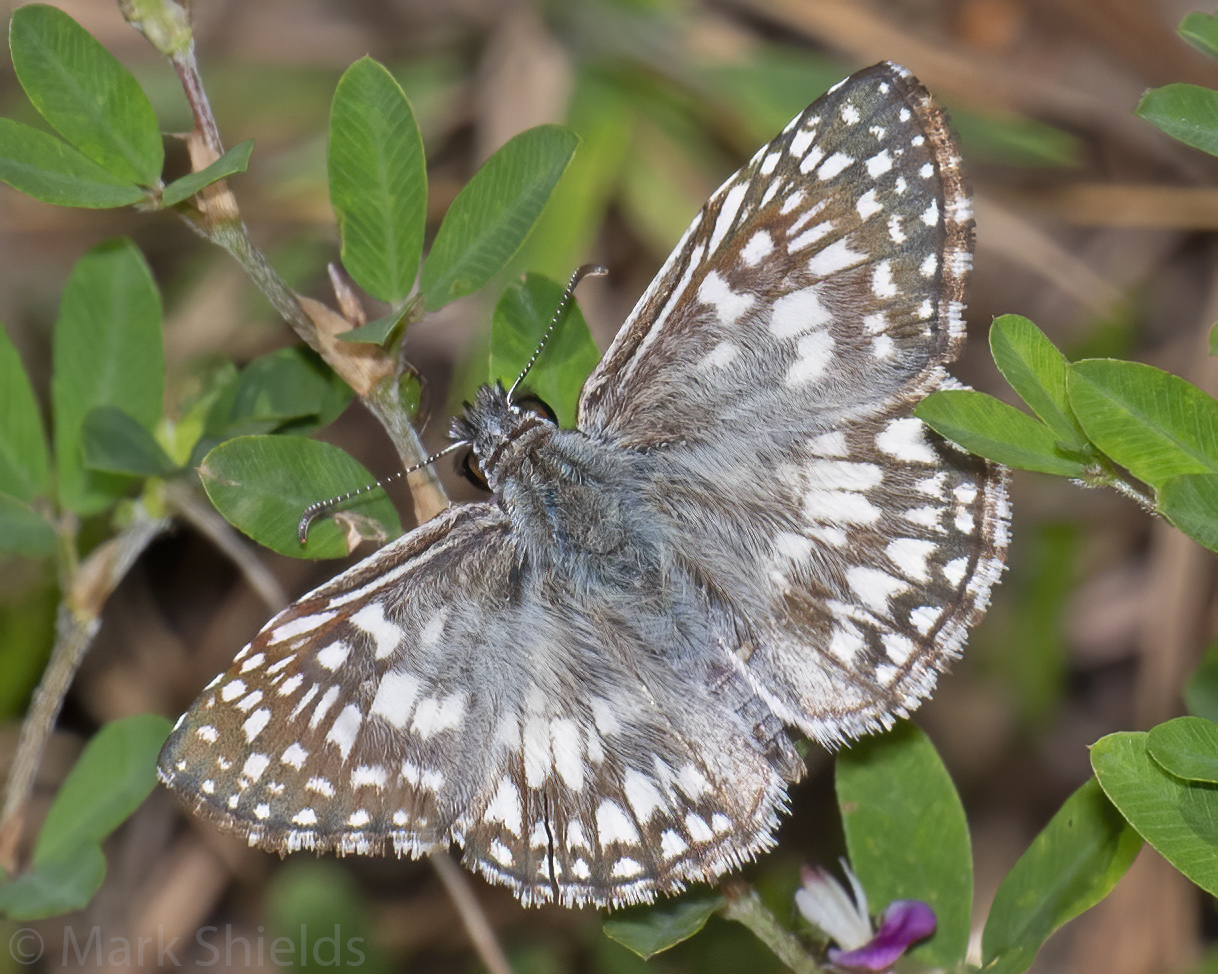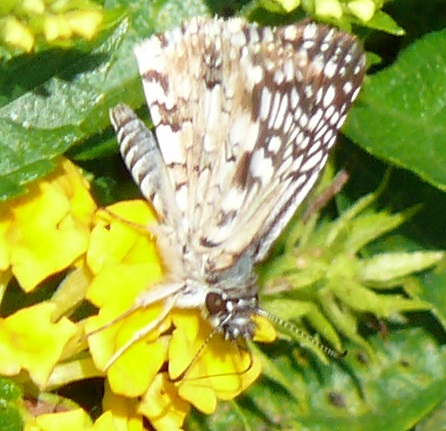|
| Common Name | Tropical Checkered-Skipper by Bruce Smithson => 2009-09-30. NC Aquarium, Ft. Fisher, New Hanover County
[View PDF]
 Click to enlarge Click to enlarge
[Google Images] GBIF [Global Distribution ] BoA [Images ] iNaturalist |
| Scientific Name | Burnsius oileus
|
| Link to BAMONA species account. |
| Map | Click on a county for list of all database records for the species in that county.
 |
| Distribution | DISTRIBUTION: Essentially a fall season visitor (or possible resident now), with currently 11 county records; six of these were newly added in 2020. Mostly found in the southeastern corner of the state, but strays have now reached the southern Piedmont and southern Mountains. Possibly could be breeding on occasions in the southeastern counties, especially as a June record came in 2021. There is an old record for Buncombe County, for which we have no data, other than the record was more than 20 years ago. There are now recent photographic records for most of the remaining counties where recorded. This is a species of the Deep South, until a few decades ago ranging regularly north only to northern FL. However, since about 2005 the species has been colonizing eastern GA and the southern half of SC, and the species is now regularly seen (as a breeding resident) in many counties in the lower Coastal Plain of SC.
|
| Abundance | ABUNDANCE: Now rare in Brunswick and New Hanover counties, and very rare to rare northeast to Carteret and Bladen counties; accidental to casual elsewhere. The species is expanding its range northward, and thus more NC records should be expected over the next decade.
|
| Flight | FLIGHT PERIOD: Primarily the fall season, but a record (in 2021) on June 13 suggests that there is a breeding colony at that site, as migrants from SC seldom appear until late summer or fall. Dates of the other NC records occur between August 29 and November 7. Most SC dates are also for the fall season, even though the species is a resident there. It is likely that SC receives an influx of northbound migrants from farther south in the fall season.
|
| Habitat | HABITAT: Open country; gardens, lawns, roadsides, fields, wooded borders, etc. -- especially within a few miles of the coast (in NC).
|
| Plants | FOOD AND NECTAR PLANTS: The foodplants are mallows (Malvaceae). The species nectars on many flowers, such as Lantana (Lantana strigocamara).
|
| Comments | COMMENTS: NC finally got recent confirmation of this species. Joe Lafferty photographed a male on the mainland part of Sunset Beach (Brunswick County) on October 1, 2013. Immediately after hearing of this record, Bruce Smithson re-checked his photos of checkered-skippers taken in New Hanover County, and he found a photo of a male Tropical taken at Fort Fisher on September 30, 2009! I saw a male at Fort Fisher on October 6, 2017. Hunter Phillips photographed one on the UNC-Wilmington campus on October 18, 2017. Bob Cavanaugh collected one on September 7, 2019 in Carteret County, our northeasternmost county record. In 2020, Nick Flanders photographed one in Columbus County, and Mark Shields photographed another in Onslow County. A few additional photo records came elsewhere in NC late in the 2020 season, even one in the Mountains in Transylvania County. Amy Padgett has photographed it on three occasions in Bladen County in 2021-22. Records in lower SC have become so regular in recent years that it is now certainly a breeding resident, at least locally.
The species looks quite similar to Common and White checkered-Skippers but has a few more white spots/dots. The main mark is that in Tropical, there is a strong white elliptical spot just outside of the paired/square "wrist band" in the middle of the upper fore wing. In the other two species, outside of this paired/square wrist band is only a tiny white dot, or no dot at all. Tropical also has a tiny white dot in the fore wing outer corner, at the end of the dot row just inside the margin. Both Common and White lack this corner white dot. However, this last dot may be difficult to see in the field, and perhaps seen only (or certainly best) in photos.
|
State Rank | SZN | | State Status | |
Global Rank | G5 | | Federal Status | |
| Synonym | Pyrgus oileus
|
| Other Name |
|
|
|

 >>
>>





